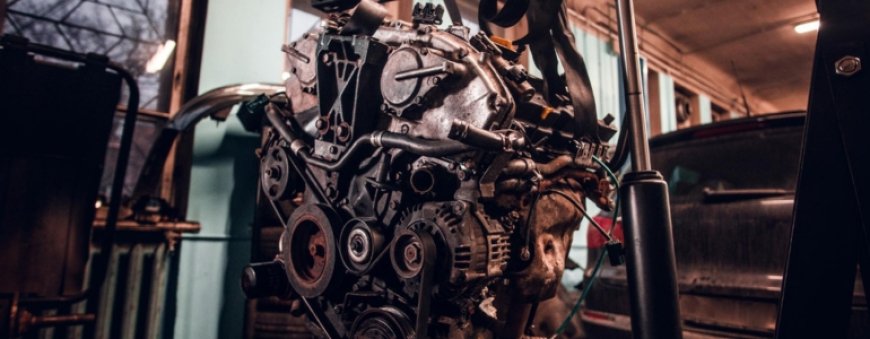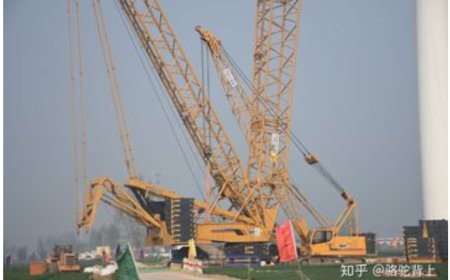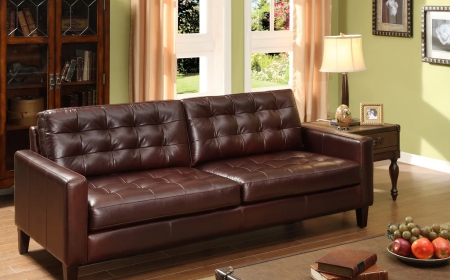A Guide on the Different Types of Motor Mounts
As the engineering technology progressed and riders began wanting the vehicle to ride smoother, the motor manufacturers since then have created different types of motor mount designs for the vehicle based on its requirements.

When it comes to engine performance, noise suppression, and stability of the vehicle, one of the workhorses overlooked is the motor mount. Standing tall and towering in height but mighty in function when it comes to maintaining your car's engine system at peak performing level and for a very, very long time are the motor mounts. Motor mounts really have the function of bracing the engine to the frame of your car and dissipating vibrations and controlling movement as the car travels along the highway.
As the engineering technology progressed and riders began wanting the vehicle to ride smoother, the motor manufacturers since then have created different types of Motor Mount Designs for the vehicle based on its requirements. We can identify here from this article the types of motor mounts available today, their applications, the advantages, and why and when you upgrade or replace them.
What is a Motor Mount?
A motor mount or engine mount is a device that suspends a car engine against a car body. It is usually made of a combination of rubber and metal but more recent installations utilize hydraulic or electrical parts. The mount serves two purposes:
- Keep the engine so it will not shift or move.
- Absorb vibrations and noise so the engine movement will not disturb the stability and comfort of the car.
- Engine vibration, without an effective motor mount, is transferred straight into the cabin and has a harsh ride, at best, and destroys other components by way of misalignment or metal fatigue.
Why Motor Mounts Matter?
We will discuss why the proper motor mount is so important before discussing types:
- Vibration dampening: A Proper motor mount dampens the engine vibration, reducing wear and enhancing comfort.
- Engine support: It maintains the engine in balance particularly during acceleration, braking, or turning.
- Noise insulation: There are sufficient mounts that stop rough engine sound from getting through the passenger compartment.
- Protection: A loose mount will result in the engine going out of balance, crushing wires or hoses, and even damaging the transmission.
1. Conventional Rubber Motor Mounts
Overview:
The more universal of the two that are utilized by conventional internal combustion engine (ICE) automobiles, rubber mounts consist of a metal bracket and a moulded-in-place insert of rubber.
Benefits:
- Low-complexity and low-cost design
- Excellent in vibration suppression
- Low maintenance needs
Drawbacks:
- assistant
Drawbacks:
- Degenerate over a period of time (cracking, hardening)
- Less effective at high performance levels
- Susceptible to oil or fluid contamination
Applications
- General-purpose motorcars
- Used cars and economy cars
- Applications where cost and simplicity are most important
2. Hydraulic Motor Mounts
Description:
assistant
Description:
aid
Description:
Following the rubber mounts are hydraulic motor mounts. They consist of rubber with an inner chamber filled with fluid to achieve even greater isolation of engine motion and low-frequency vibration.
Advantages:
- Increased isolation of low-frequency vibration
- Improved ride quality
- Engine motion is reduced for acceleration or idling
Drawbacks:
- Expensive compared to rubber mounts
- Susceptible to internal damage or leakage
- Optimal for performance application where stiffness is less
Recommended for
- Mid- to high-performance passenger car
- High-power engine cars
- Drivers who want comfort and sound isolation
3. Solid Motor Mounts (Polyurethane or Metal)
Summary:
- Solid motor mounts reduce or eliminate the rubber insert and substitute it with solid metal or polyurethane, which is stiffer.
Benefits:
- Greater engine support
- Better power transmission (least amount of engine movement)
Drawbacks:
- Increased cabin shake
- Harsh ride quality
- Increased noise transmission
Applications for:
- Racing and sports vehicles
- Tuned or performance engines
- Applications where responsiveness as well as power transfer must be experienced at the expense of comfort
4. Active Motor Mounts (Electronic or Adaptive Mounts)
Summary:
Active motor mounts are electric mounts that adaptively change mount stiffness based on engine load and RPM. The mounts use sensors, actuators, and even vacuum chambers to offset changing driving conditions.
Advantages:
- Optimal vibration and noise damping
- Adjusts itself with conditions
- Silky idle and smooth ride
Disadvantages:
- Sophisticated and costly
- Requires control systems and maintenance
- Typically OEM model-specific, never as aftermarket upgrades.
Warranted for
- Luxury and performance vehicles (e.g., BMW, Lexus, Mercedes-Benz)
- Turbo or hybrid engines
- They who require the optimum balance of comfort and performance
5. Torque Strut Mounts
Overview:
Torque strut mounts are typically secondary mounts that limit engine rotation on torque loads. They are utilized on front-wheel-drive cars and are not main engine supports but auxiliary mounts.
Advantages:
- Reduces excessive engine swaying
- Safeguards primary mounts against wear
- Improves throttle response
Disadvantages:
- Not a substitute for OEM engine mounts
- Low vertical vibration damping
Best for:
- Front-wheel-drive cars
- Cars that see frequent acceleration/deceleration
- Keeping other mounts in service longer
- Warning Signs Your Motor Mount is Dying
- A bad motor mount can be discovered sooner rather than later to prevent problems down the line. Be aware of these:
Over-vibrations inside the cabin or via the steering wheel Clunking, banging when slowing or speeding up Shudder of engine every time the bonnet is open and the engine is revved Engine parts are out of alignment, like belts or hoses that seem out of place. Damaged or cracked rubber mount is visible
How to Choose the Best Motor Mount for Your Vehicle?
When choosing the best motor mount for you, consider the following:
1. Vehicle and Usage Comfort cars use hydraulic or rubber mounts for everyday driving. Solid mounts can be used in race or performance vehicles.
2. Cost Rubber mounts are the most cost-effective. Hydraulic mounts and active mounts are more expensive in terms of material and technology.
3. Performance Expectations
Want a smoother ride? Hydraulic or active mounts would be your choice. Want the best engine response? Solid mounts would be your choice.
4. Durability
Polyurethane mounts are tougher than rubber but will need to be lubricated periodically. Hydraulic mounts would have to be replaced earlier if there is a fluid leak.
Installation and Maintenance Tips
- Have professional installation, particularly for hydraulic or active mounts.
- Check motor mounts at 50,00070,000 km or on total engine overhaul.
- Try to avoid extreme rough driving to optimize mount life.
- When replacing with a stiffer mount, ensure that your drivetrain and chassis will be able to handle the increased vibration.
Conclusion
While soon to become outdated, motor mounts are actually critical to the drive, comfort, and safety of your car. They all play their own specialized role for various demands of driving, from rubbery dinosaurs of yesteryear to more sophisticated active mounts. It's nice to have an understanding of the various types of motor mounts so you can make informed decisionsrestoring the daily driver, tuning the performance car, or just attempting to eliminate some rude vibration out of an engine.
When you do need to replace or upgrade your engine mount, don't go for an off-the-shelf unit. Think about the performance demands of your car, your driving needs, and your budget. The right motor mount can transform everything about how you drivedramatically cutting harshness, providing smoother throttle response, and prolonging engine life by years.
Also Read: What is Aluminium? Material Overview and Design Considerations


































